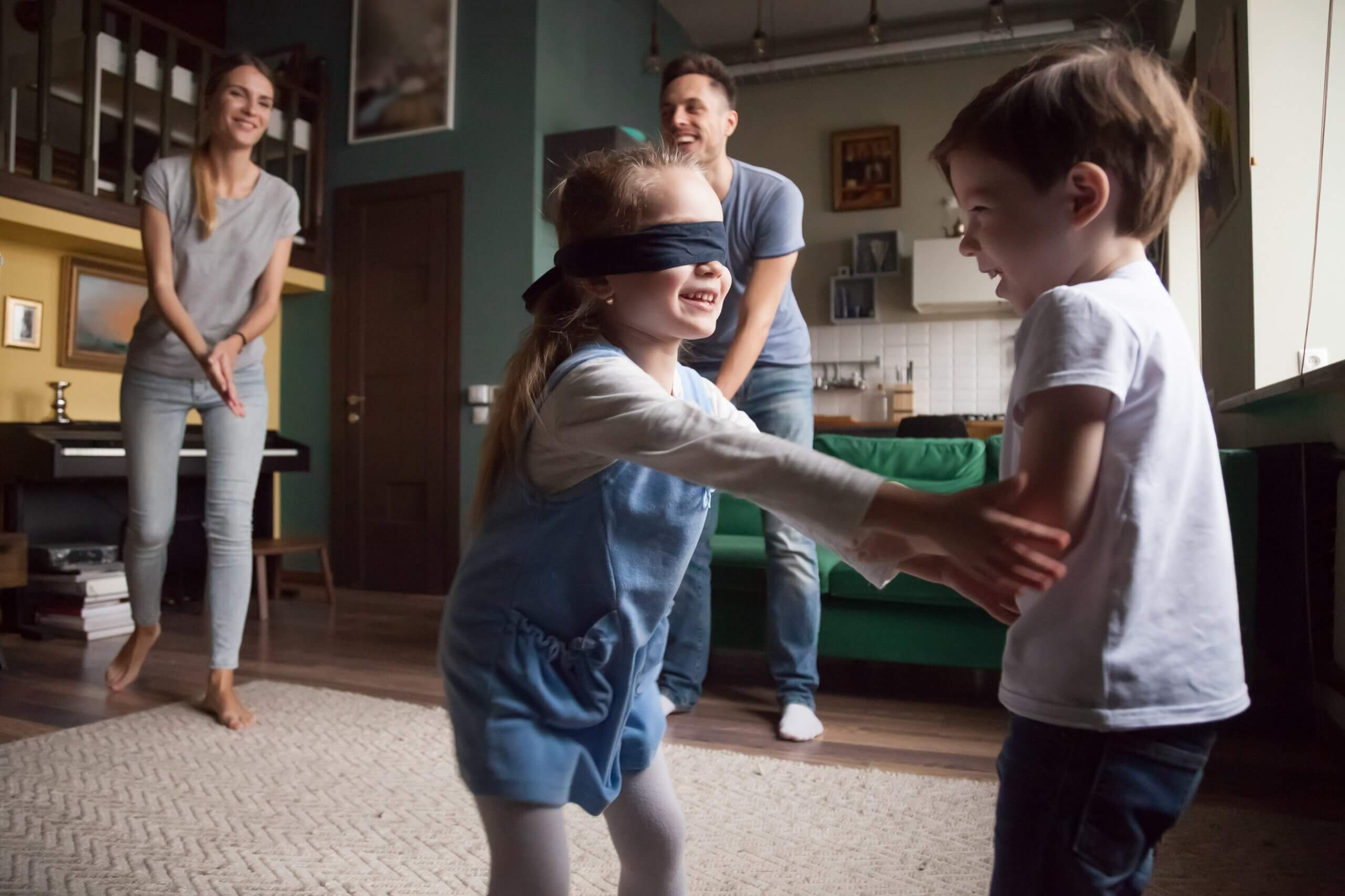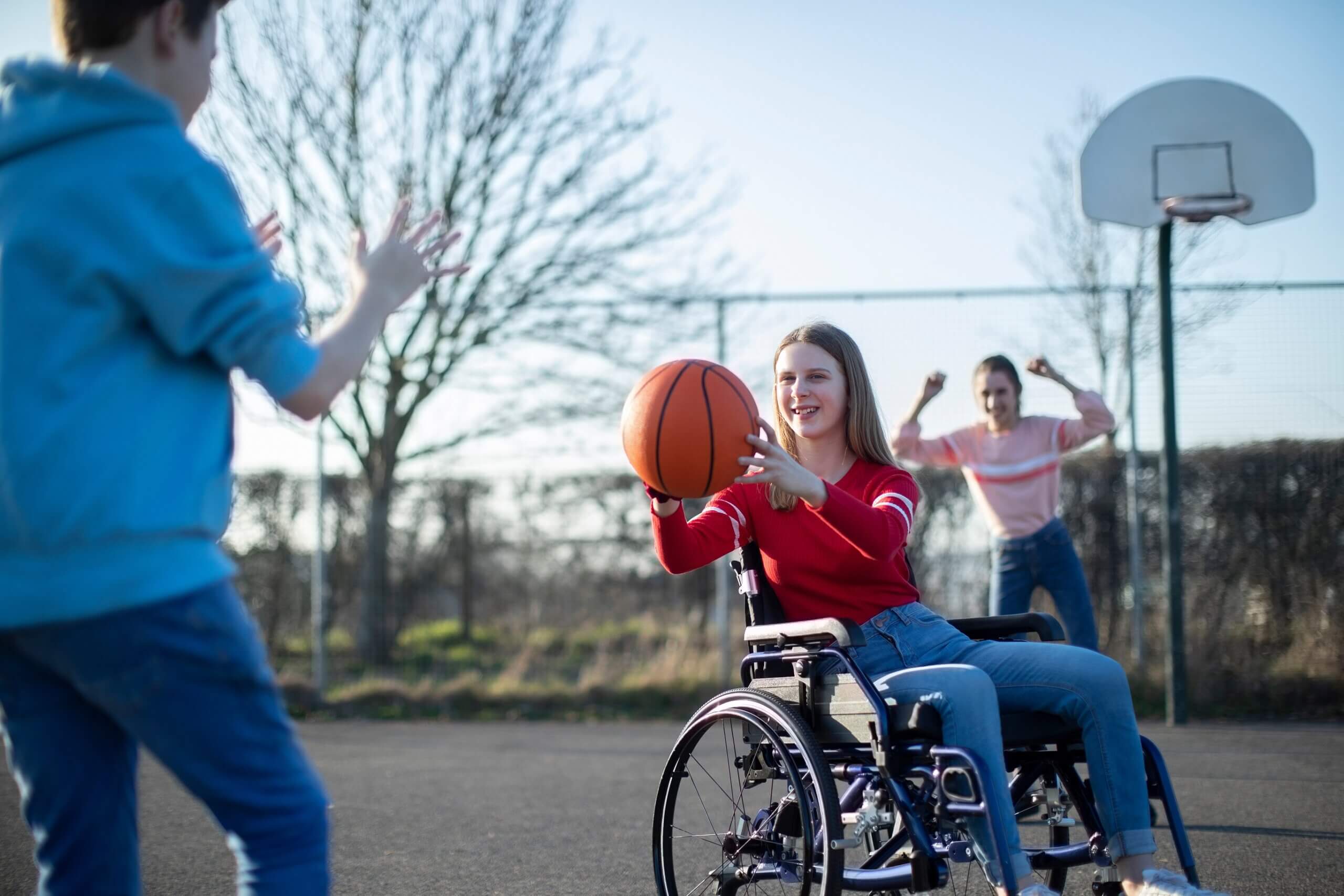Helping Children Understand Disability


Written and verified by the psychologist Maria Fátima Seppi Vinuales
The questions start with a simple why, or what happened to that person? And automatically, in the adult world, some discomfort is triggered. Why is disability so upsetting? Perhaps it’s because it’s associated to the false belief that any difference is negative and has to do with stigma. In this article, we’ll tell you how to help children understand disability.
In a child’s mind, there’s simply something that attracts their attention because it looks different. It’s a curiosity that seeks answers, but it’s part of that spirit of exploration of the world. However, the answers we adults give will determine much of the attitude these young children take on about disability. After all, we know how important socialization is at an early age. Today’s society demands more tolerance and more respect and commitment to human rights.
How to talk to children about disability
In many cases, children learn things when they’re able to experience them firsthand. Therefore, in addition to talking, you can promote certain dynamics to make the concept more accessible, although you should always consider the age of the child.
Invite them to think about the things they have difficulty with
A simple way to explain disability when children are young is to invite them to think about the things they find most difficult to do. Disability has a certain resemblance in that some activities are difficult to do or require more effort or even help from others. That’s why it has also been called functional diversity, in order to point out that many people learn to do the same activities, but in a different way. For example, painters who don’t have arms are able to recreate beautiful works of art using their feet.

Recreate a situation through a game
Along the same lines, we can also recreate a game where we make it impossible for the child to use any of their senses or any part of their body. For example, pose a challenge to solve a task blindfolded. The objective is that they can identify other realities and empathize with them.
Focus on similarities in order to help children understand disability
All children like games, stories, and laughter. In this regard, a good option is to promote coexistence and familiarity. Keep in mind that it’s very important to educate from care and not from fear. For example, a child who uses a wheelchair can participate in races. So, you can choose a field where their chair won’t be ruined or punctured, but you won’t stop playing out of fear that something will happen to them. According to the age of the child, one of the ways to talk about disability can be through stories.
Exemplify with achievements of famous people or celebrities
Giving examples of references or famous people who are characterized by their achievements and tenacity is a good way to educate children. This way, you’ll be able to detach the idea of disability as something negative and something that people “suffer from”. At the same time, you’ll promote a positive image and the fact that people with a disability can participate in a multitude of activities as long as they have the necessary support.
You may be interested in: Activities for Children with Visual Impairment
What to keep in mind when helping children understand disability

Some recommendations to keep in mind when approaching the topic of disability with children are the following:
- Review your own preconceptions. Children learn from adults, and most of the time, we’re the ones who transmit ideas that are loaded with prejudice and ignorance. Instead, besides reflecting on how you think about disability, it’s important to respond with an “I don’t know, let’s find out together”, when you don’t have the right answer to their curious questions. You should give clear and simple explanations, teach respect, and help your children learn not to judge others.
- Be careful with your expressions and vocabulary. Many times, even out of ignorance, we use terms that are loaded with a certain negative connotation. For example, “retarded” and “poor thing”, among others, are harmful and offensive terms that tend to encompass the person as if the disability were the only aspect of their life.
- Promote empathy and encourage children to interact naturally with their peers who have a disability through play.
- Be the role model. We already know that children learn many things from observation and imitation. Therefore, let’s be the first to have desirable behaviors. For example, don’t leave out classmates with a disability when it comes to birthday parties or simply an afternoon of after school play. Instead, talk to their parents and ask them how we can facilitate their participation. That child may need some extra support, but they should still be made part of the group.
You may be interested in: Early Stimulation for Children with Intellectual Disabilities
Stop making disability a taboo
It’s important to keep in mind that, most of the time, the social view is more disabling than the disability itself. It’s this distance between our prejudices and other people that generates more suffering than the fact of not being able to see or not being able to walk. Children tend to be more naïve and have a vision that’s stripped of stereotypes. Let’s learn from them, naturalize differences, and promote diversity.
The questions start with a simple why, or what happened to that person? And automatically, in the adult world, some discomfort is triggered. Why is disability so upsetting? Perhaps it’s because it’s associated to the false belief that any difference is negative and has to do with stigma. In this article, we’ll tell you how to help children understand disability.
In a child’s mind, there’s simply something that attracts their attention because it looks different. It’s a curiosity that seeks answers, but it’s part of that spirit of exploration of the world. However, the answers we adults give will determine much of the attitude these young children take on about disability. After all, we know how important socialization is at an early age. Today’s society demands more tolerance and more respect and commitment to human rights.
How to talk to children about disability
In many cases, children learn things when they’re able to experience them firsthand. Therefore, in addition to talking, you can promote certain dynamics to make the concept more accessible, although you should always consider the age of the child.
Invite them to think about the things they have difficulty with
A simple way to explain disability when children are young is to invite them to think about the things they find most difficult to do. Disability has a certain resemblance in that some activities are difficult to do or require more effort or even help from others. That’s why it has also been called functional diversity, in order to point out that many people learn to do the same activities, but in a different way. For example, painters who don’t have arms are able to recreate beautiful works of art using their feet.

Recreate a situation through a game
Along the same lines, we can also recreate a game where we make it impossible for the child to use any of their senses or any part of their body. For example, pose a challenge to solve a task blindfolded. The objective is that they can identify other realities and empathize with them.
Focus on similarities in order to help children understand disability
All children like games, stories, and laughter. In this regard, a good option is to promote coexistence and familiarity. Keep in mind that it’s very important to educate from care and not from fear. For example, a child who uses a wheelchair can participate in races. So, you can choose a field where their chair won’t be ruined or punctured, but you won’t stop playing out of fear that something will happen to them. According to the age of the child, one of the ways to talk about disability can be through stories.
Exemplify with achievements of famous people or celebrities
Giving examples of references or famous people who are characterized by their achievements and tenacity is a good way to educate children. This way, you’ll be able to detach the idea of disability as something negative and something that people “suffer from”. At the same time, you’ll promote a positive image and the fact that people with a disability can participate in a multitude of activities as long as they have the necessary support.
You may be interested in: Activities for Children with Visual Impairment
What to keep in mind when helping children understand disability

Some recommendations to keep in mind when approaching the topic of disability with children are the following:
- Review your own preconceptions. Children learn from adults, and most of the time, we’re the ones who transmit ideas that are loaded with prejudice and ignorance. Instead, besides reflecting on how you think about disability, it’s important to respond with an “I don’t know, let’s find out together”, when you don’t have the right answer to their curious questions. You should give clear and simple explanations, teach respect, and help your children learn not to judge others.
- Be careful with your expressions and vocabulary. Many times, even out of ignorance, we use terms that are loaded with a certain negative connotation. For example, “retarded” and “poor thing”, among others, are harmful and offensive terms that tend to encompass the person as if the disability were the only aspect of their life.
- Promote empathy and encourage children to interact naturally with their peers who have a disability through play.
- Be the role model. We already know that children learn many things from observation and imitation. Therefore, let’s be the first to have desirable behaviors. For example, don’t leave out classmates with a disability when it comes to birthday parties or simply an afternoon of after school play. Instead, talk to their parents and ask them how we can facilitate their participation. That child may need some extra support, but they should still be made part of the group.
You may be interested in: Early Stimulation for Children with Intellectual Disabilities
Stop making disability a taboo
It’s important to keep in mind that, most of the time, the social view is more disabling than the disability itself. It’s this distance between our prejudices and other people that generates more suffering than the fact of not being able to see or not being able to walk. Children tend to be more naïve and have a vision that’s stripped of stereotypes. Let’s learn from them, naturalize differences, and promote diversity.
All cited sources were thoroughly reviewed by our team to ensure their quality, reliability, currency, and validity. The bibliography of this article was considered reliable and of academic or scientific accuracy.
- Silva, P. O., Garduño, A. G., & Velásquez, A. S. (2005). Expectativas y maneras de vivir la paternidad con niños discapacitados. Psicología y salud, 15(2), 263-269.
- del Toro Alonso, V. (2014). El juego como herramienta educativa del educador social en actividades de animación sociocultural y de ocio y tiempo libre con niños con discapacidad.
This text is provided for informational purposes only and does not replace consultation with a professional. If in doubt, consult your specialist.








